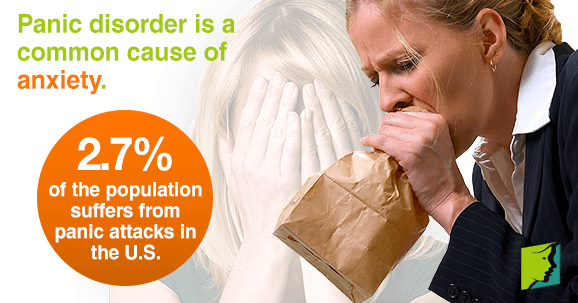Anxiety is defined as a feeling of unease, such as worry or fear. Although it is normal to react to stressful situations with a degree of anxiety, this is usually functional and serves to motivate individuals into being more focused or solving problems. For most people, this anxiety disappears after the situation is over. For some, however, anxious feelings are chronic and are not necessarily tied to a specific event. This can lead to psychological and physical symptoms, such as a constant sense of dread, restlessness, and even chest pains. Read on to discover more about the most common causes of this condition.
What Causes Anxiety?
The causes of anxiety are wide-ranging and are often difficult to pinpoint, since there are normally multiple factors at play, including genetics, brain chemistry, personality, hormone levels, and life events. Millions of people suffer from some sort of anxiety disorder, and chronic anxiety is most often caused by one or more of the disorders below.
Menopause
The transition into menopause often triggers several symptoms. As progesterone and estrogen levels fluctuate and decrease, many of the bodily processes they regulate - including mood - are impacted. It is thought that low estrogen levels are connected to anxiety disorders in some women. In addition, the stress of other menopause symptoms and midlife events can trigger anxiety episodes.
Panic Disorder
Women are twice as likely to be affected by panic disorder as men, with the official statistic from the U.S. being 2.7% of the population. It is defined as having recurring panic attacks, often for no external reason. Severe anxiety, panic, and stress occur regularly and at any time.
Phobic Disorders
Typically, specific phobic disorders begin in childhood, but can develop at any time. This condition is characterized by an irrational fear of a particular trigger, be it heights, insects, or flying, among many others. In someone with a phobic disorder, the irrational need to avoid their particular phobia can affect daily life and relationships, as the sense of anxiety is almost overpowering and beyond the individual's control.
Post-Traumatic Stress Disorder (PTSD)
This affects around 3.3% of the American population, and the most common trigger is rape and sexual violence, with around 55% of sexual abuse victims on average developing the disorder. PTSD can occur immediately after the event or years later, and it often leads to flashbacks of the incident and emotional outbursts. Chronic anxiety is often triggered by this.
Generalized Anxiety Disorder (GAD)
This is a long-term illness that causes the individual to be anxious about a wide range of things that would seem irrational or trivial to a non-sufferer. Feeling constantly “on-edge” and having a chronic sense of dread are oft-reported complaints from people with GAD. Physical symptoms of anxiety and stress can lead to sweatiness, muscle fatigue, and chest pains.
External Factors
Stressful life events can trigger anxiety disorders, such as sexual abuse, stress within a marriage, and loss of a loved one. It can also be caused by malnutrition or be genetic.
Anxiety is highly treatable, but currently only a third of women in the U.S. thought to suffer from anxiety receive treatment. The causes and risk factors for anxiety are complex, so the type of treatment offered is dependent on each individual's unique situation. Most of the time, a few different mental disorders work in tandem to create the anxiety that can have such an adverse effect on a sufferer's life.
Sources
- Anxiety and Depression Association of America. (2014). Facts and Statistics. Retrieved July 14, 2014, from http://www.adaa.org/about-adaa/press-room/facts-statistics
- National Health Service UK. (2014). Generalised anxiety disorder. Retrieved July 14, 2014, from http://www.nhs.uk/conditions/anxiety/pages/introduction.aspx
- National Institutes of Health. (2014). Anxiety. Retrieved July 14, 2014, from http://www.nlm.nih.gov/medlineplus/anxiety.html
- Office on Women's Health. (2013). Menopause and mental health. Retrieved July 14, 2014, from http://womenshealth.gov/menopause/menopause-mental-health/




